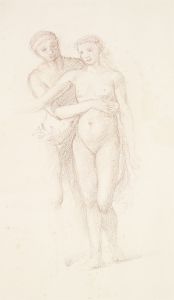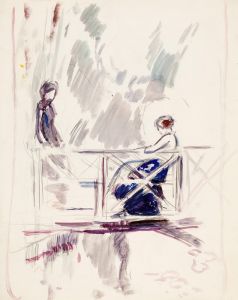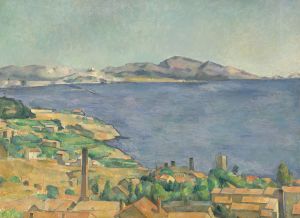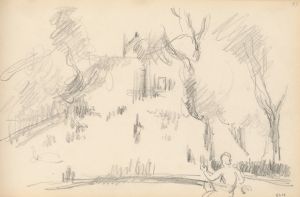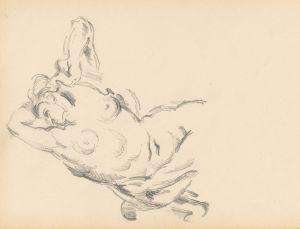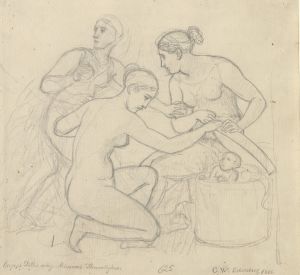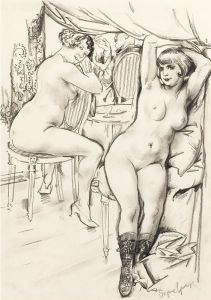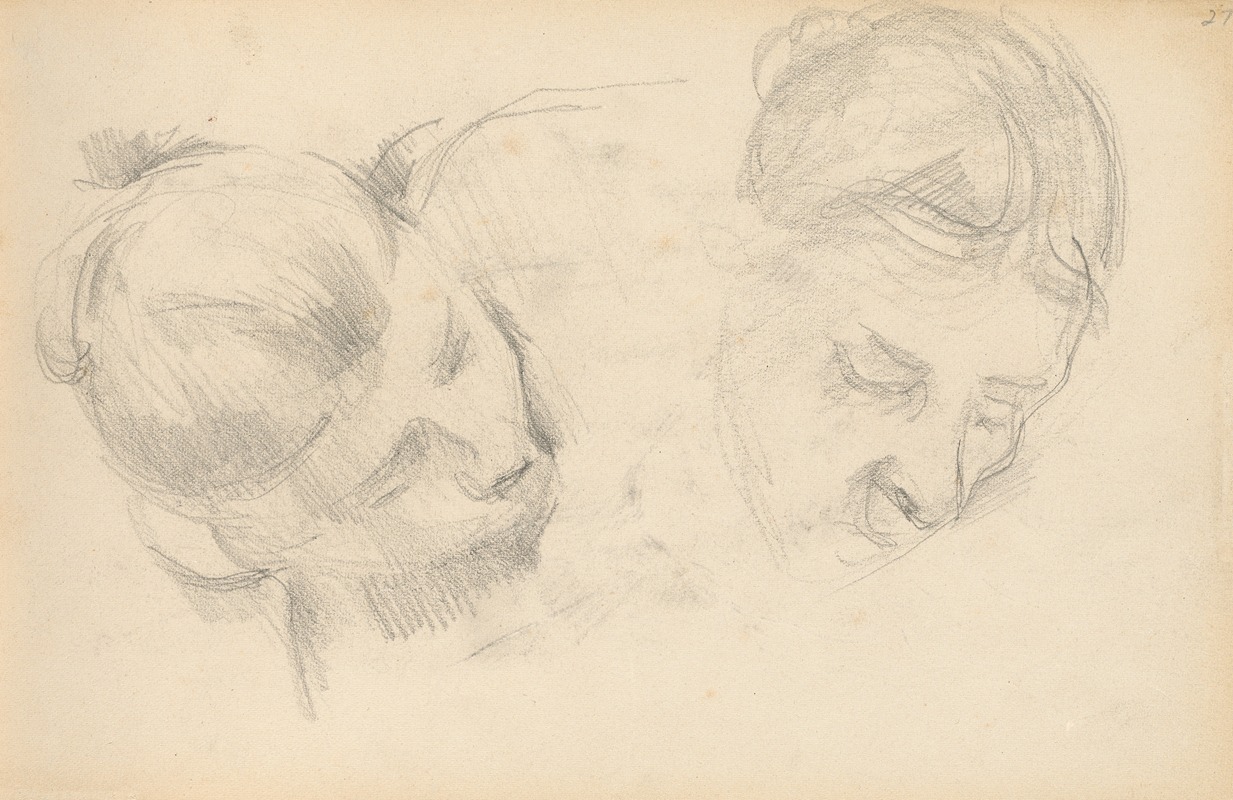
Two Heads of Women
A hand-painted replica of Paul Cézanne’s masterpiece Two Heads of Women, meticulously crafted by professional artists to capture the true essence of the original. Each piece is created with museum-quality canvas and rare mineral pigments, carefully painted by experienced artists with delicate brushstrokes and rich, layered colors to perfectly recreate the texture of the original artwork. Unlike machine-printed reproductions, this hand-painted version brings the painting to life, infused with the artist’s emotions and skill in every stroke. Whether for personal collection or home decoration, it instantly elevates the artistic atmosphere of any space.
"Two Heads of Women" is an oil painting by the renowned French artist Paul Cézanne, who is often credited with bridging the transition from 19th-century Impressionism to 20th-century Cubism. Cézanne's work is characterized by his unique approach to form and color, which laid the groundwork for the modern art movements that followed.
This particular painting, "Two Heads of Women," is a lesser-known work by Cézanne, yet it encapsulates many of the stylistic elements that define his oeuvre. The painting features two female figures, each depicted with a distinct approach to form and color. Cézanne's technique involves the use of bold brushstrokes and a palette that emphasizes the interplay of light and shadow, creating a sense of volume and depth.
Cézanne's interest in the human form is evident in this work. He often explored the complexities of human anatomy and expression, striving to capture not just the physical appearance but also the underlying structure and emotional resonance of his subjects. In "Two Heads of Women," Cézanne employs a subtle yet effective use of color to convey the individuality of each figure. The juxtaposition of warm and cool tones adds a dynamic quality to the composition, inviting viewers to engage with the painting on multiple levels.
The painting reflects Cézanne's departure from the traditional techniques of his predecessors. Instead of focusing on precise detail, he emphasizes the overall impression of the scene. This approach aligns with his broader artistic philosophy, which sought to depict the essence of his subjects rather than their exact likeness. Cézanne's innovative use of color and form in "Two Heads of Women" exemplifies his contribution to the evolution of modern art.
Cézanne's influence on subsequent generations of artists cannot be overstated. His exploration of geometric simplification and optical phenomena inspired many artists, including Pablo Picasso and Georges Braque, who would later develop Cubism. "Two Heads of Women" serves as a testament to Cézanne's pioneering spirit and his relentless pursuit of artistic innovation.
While "Two Heads of Women" may not be as widely recognized as some of Cézanne's other works, such as "The Card Players" or "Mont Sainte-Victoire," it remains an important piece within his body of work. The painting offers insight into Cézanne's artistic process and his enduring impact on the art world.
In summary, "Two Heads of Women" by Paul Cézanne is a significant work that showcases the artist's mastery of form and color. Through his innovative techniques, Cézanne captures the complexity of human expression and lays the groundwork for future artistic movements. This painting, like much of Cézanne's work, continues to be studied and admired for its contribution to the development of modern art.





